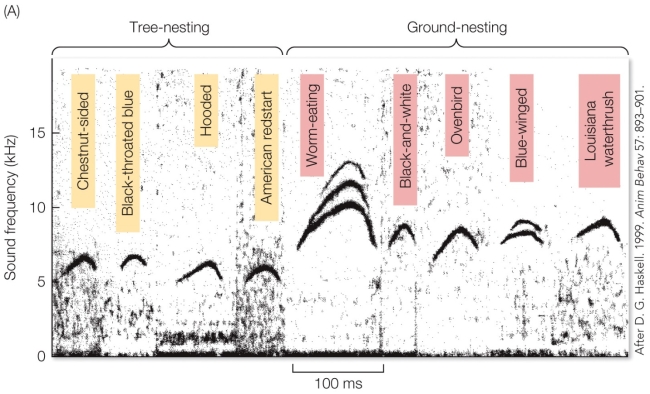Multiple Choice
Refer to the figure. Calls at higher frequencies do not travel as far as calls at lower frequencies. This suggests that the begging frequencies of ground-nesting warblers are
Calls at higher frequencies do not travel as far as calls at lower frequencies. This suggests that the begging frequencies of ground-nesting warblers are
A) an adaptation to evade eavesdropping by predators due to their higher nest exposure.
B) non-adaptive per se, but the by-product of another adaptive trait.
C) an honest signal that communicates the chick's health to its parents.
D) an adaptation that evolved in an ancestor of both tree and ground nesting warblers.
Correct Answer:

Verified
Correct Answer:
Verified
Q1: Refer to the figure.<br> <img src="https://d2lvgg3v3hfg70.cloudfront.net/TBO1022/.jpg" alt="Refer
Q3: Refer to the figure.<br><img src="https://d2lvgg3v3hfg70.cloudfront.net/TBO1022/.jpg" alt="Refer to
Q4: A hunting owl hears the rustling of
Q5: White-tailed deer raise their tails when they
Q6: How does a sensory drive contribute to
Q7: Refer to the figure.<br><img src="https://d2lvgg3v3hfg70.cloudfront.net/TBO1022/.jpg" alt="Refer to
Q8: What information is communicated through the waggle
Q9: Elaborate male traits that are used in
Q10: Both the sender and receiver of a
Q11: A spider researcher, Pia Stålhandske, knew that